Microsoft Edge browser allows users to install extensions via the Microsoft Store. But if you are a system administrator and do not wish to allow users to install them, you can do so easily by using the Group Policy Editor and Registry Editor. In this post, we will see how to disallow or block installation of Extensions in Microsoft Edge browser on Windows 11/10.
What happens when you disable extension installation functionality in Edge
- The whole “Extensions” function gets deactivated immediately.
- The user cannot install/uninstall an extension.
- All the installed extensions get disabled automatically.
- The user needs to enable them manually after reverting these aforementioned steps.
Disallow installation of Microsoft Edge extensions using Group Policy
Search for gpedit.msc in the search box or you can enter the same at the Run prompt (Win + R). This will open the Group Policy Editor. After that, navigate to this path-
Computer Configuration > Administrative Templates > Windows Components > Microsoft Edge
Select Microsoft Edge. On the right side, you will see Allow Extensions setting. Double-click on it to open its Properties box.
This setting lets you decide whether employees can load extensions in Microsoft Edge. If you enable or don’t configure this setting, employees can use Edge Extensions. If you disable this setting, employees can’t use Edge Extensions.
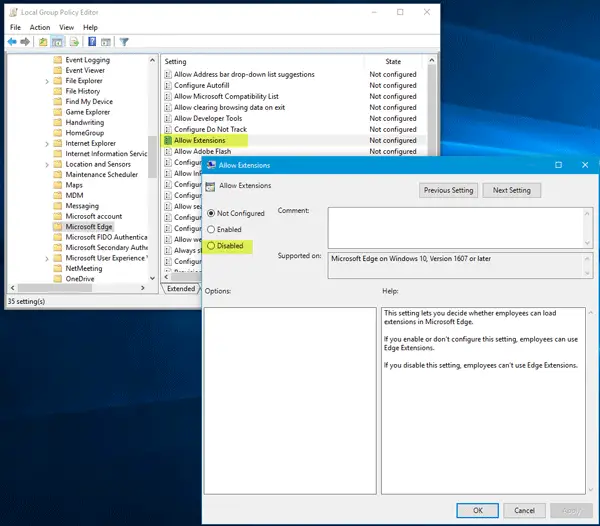
Select Disabled and save your change by clicking the Apply/OK button.
Restart your system and you are good to go.
Block extension installation in Microsoft Edge using Registry Editor
It can also be done using the Registry Editor. But first, you should create a registry backup and a system restore point.
Now open regedit using the search box, or you can enter the same at the Run prompt. After that, navigate to the following path-
Computer\HKEY_LOCAL_MACHINE\SOFTWARE\Policies\Microsoft
Here, you need to make a new key. To do so, right-click on Microsoft and select New > Key.
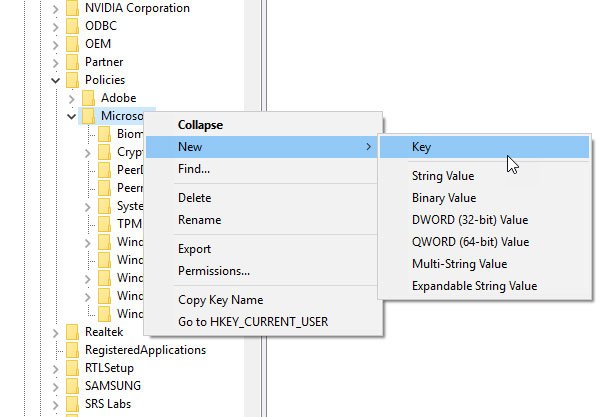
Name it as MicrosoftEdge.
Now right-click on MicrosoftEdge key, and select New > Key and name it Extensions.
After that, select Extensions key, right-click on the right-hand side, select New > DWORD (32-bit) Value. You have to name it as ExtensionsEnabled.
The default value data should be 0 and you need to keep that as it is.
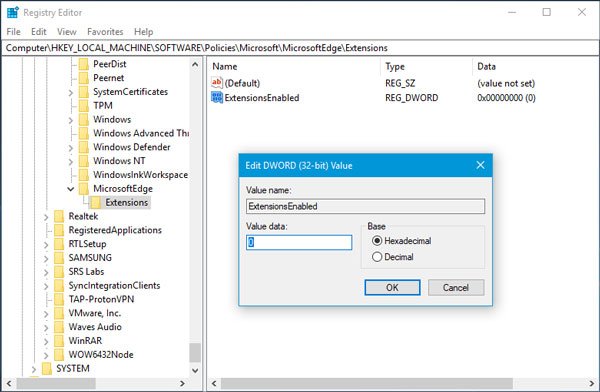
Restart your Windows computer.
Read: Enable or Disable Address Bar Drop-down List Suggestions in Microsoft Edge.
Manage Microsoft Edge extensions
You have another way to manage Microsoft Edge extensions and we will explain that now. This part of the tutorial has two sections. First, you can block the overall installation of extensions, and second, you can prevent others from installing only external extensions that are not available in the official Edge repository or Chrome Web Store.
To use these GPOs, you will have to first download and add Group Policy Templates for Microsoft Edge. Otherwise, the Group Policy method won’t work.
Prevent users from installing Extensions in Edge using GPEDIT
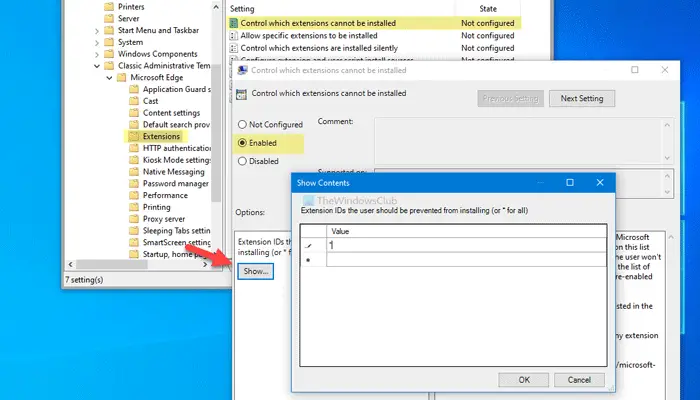
Press Win+R, type gpedit.msc, and press the Enter button to open the Local Group Policy Editor on your computer. Following that, navigate to this path-
Computer Configuration > Administrative Templates > Classic Administrative Templates > Microsoft Edge > Extensions
Double-click on Control which extensions cannot be installed setting, and choose the Enabled option. Then, click the Show button and enter * as the Value.
Click the OK button twice to save the change. After doing the last step, you won’t be able to install any extension in Edge.
The same thing can be done via Registry Editor. Before changing a value in the registry file, it is recommended to backup all Registry files.
Prevent users from installing extensions in Edge using Registry
Press Win+R, type regedit, and hit the Enter button. You can find the User Account Control pop-up window on your screen. If so, click the Yes button to open Registry Editor. Following that, navigate to this path-
HKEY_LOCAL_MACHINE\SOFTWARE\Policies\Microsoft
Right-click on Microsoft > New > Key, and name it as Edge. Then, right-click on Edge > New > Key and name it as ExtensionInstallBlocklist.
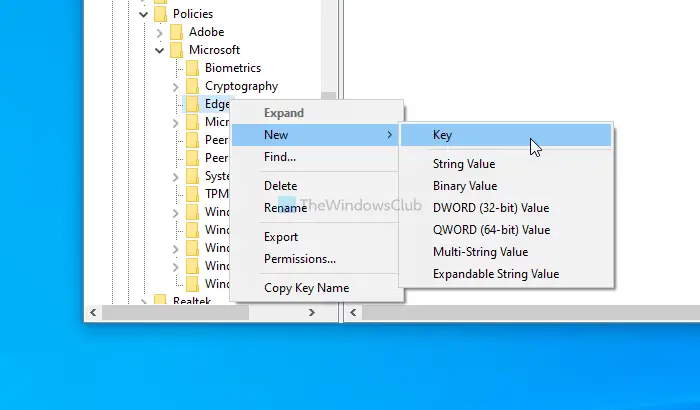
Following that, right-click on ExtensionInstallBlocklist, choose the New > String Value option and name it as 1.
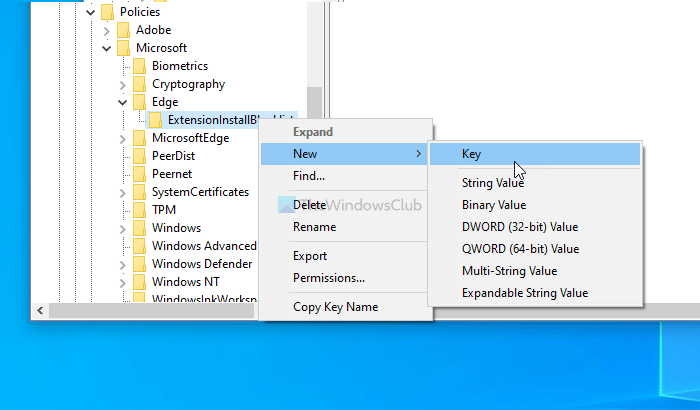
Now, double-click on 1 to set the Value data as *.
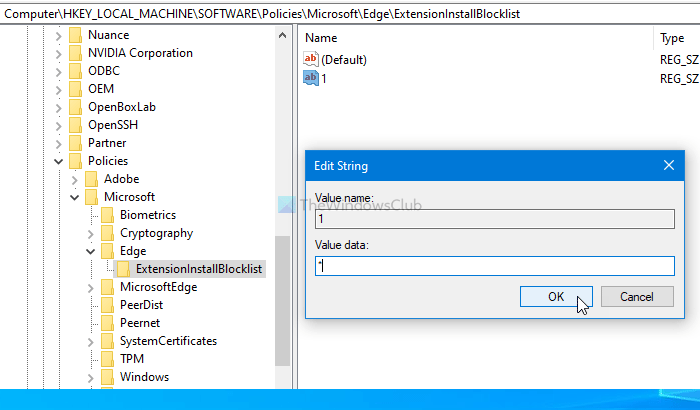
Click the OK button to save changes.
If you follow these aforementioned steps, you can prevent users from install extensions from the official repository and Chrome Web Store. However, there is another method to install extensions in the Edge browser – importing the .crx file. These are called external extensions. If you want to block that, the following steps would be helpful.
Prevent users from installing EXTERNAL extensions in Edge using Group Policy
To prevent users from installing external extensions in Edge using Group Policy, take these steps:
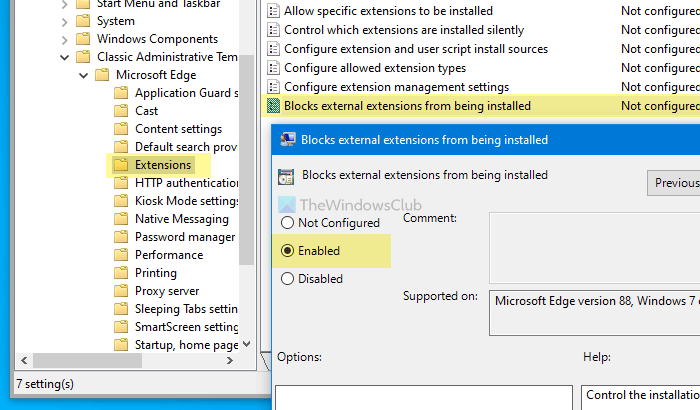
Search for gpedit.msc in the Taskbar search box, and click on the corresponding result to open Local Group Policy Editor. Then, navigate to the following path-
Computer Configuration > Administrative Templates > Classic Administrative Templates > Microsoft Edge > Extensions
Double-click on the Blocks external extensions from being installed setting, and choose the Enabled option.
Click the OK button to save changes.
Prevent users from installing EXTERNAL extensions in Edge using REGEDIT
To prevent users from installing External extensions in Edge, search for regedit in the Taskbar search box and click on the Yes button followed by clicking on the respective result. After opening the Registry Editor, navigate to this path-
HKEY_LOCAL_MACHINE\SOFTWARE\Policies\Microsoft
Right-click on Microsoft > New > Key, and call it Edge. Following that, right-click on Edge > New > DWORD (32-bit) Value, and name it as BlockExternalExtensions.
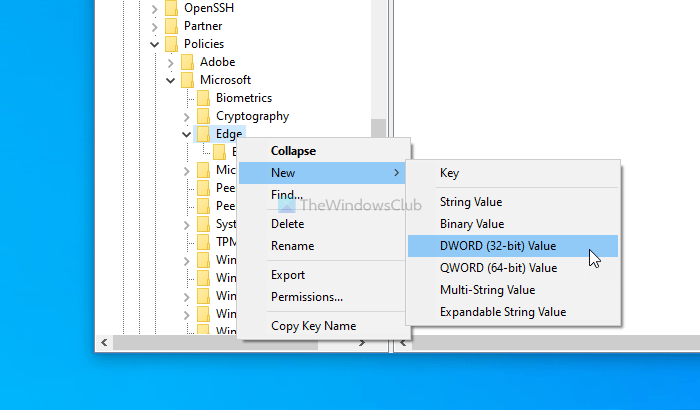
Then, double-click on BlockExternalExtensions and set the Value data as 1.
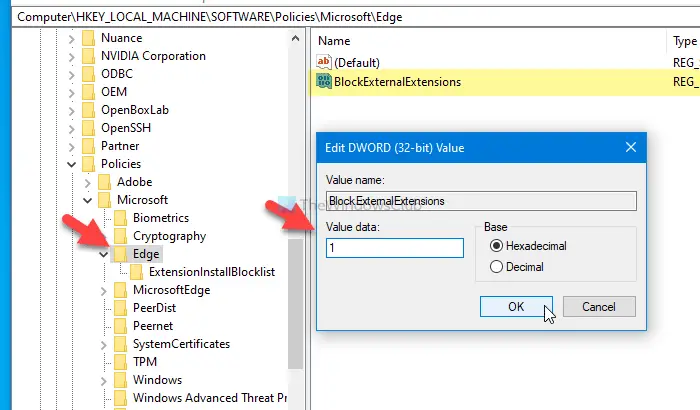
Click the OK button to save all changes.
I hope this guide helps.